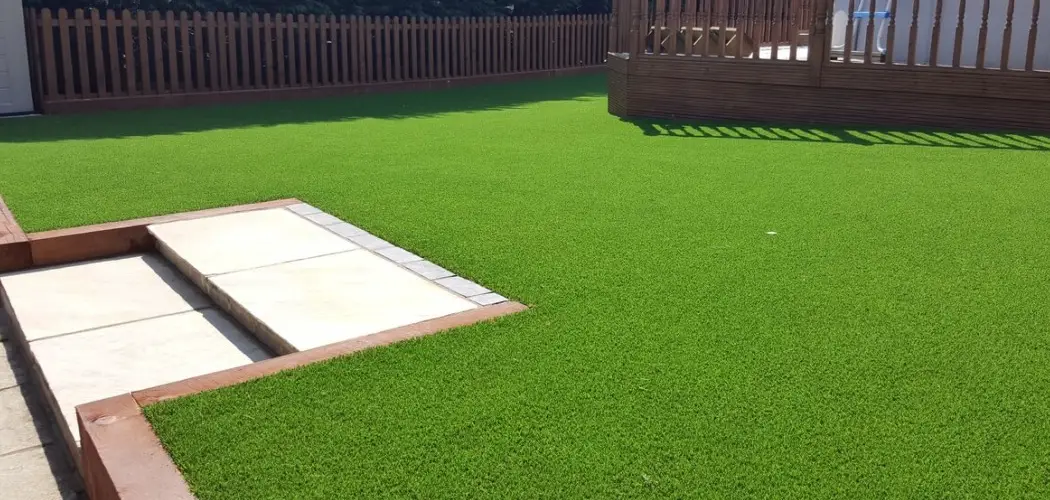Are you looking for an easy and affordable way to spruce up your outdoor space? Installing artificial grass onto concrete could be the perfect solution for you! Not only is it aesthetically pleasing, but this project can also help reduce heat absorption, offer noise protection from outside sources, and provide all-weather entertainment opportunities. Plus, with a few simple steps and basic tools, installing synthetic turf on your patio or walkway doesn’t have to be complicated.
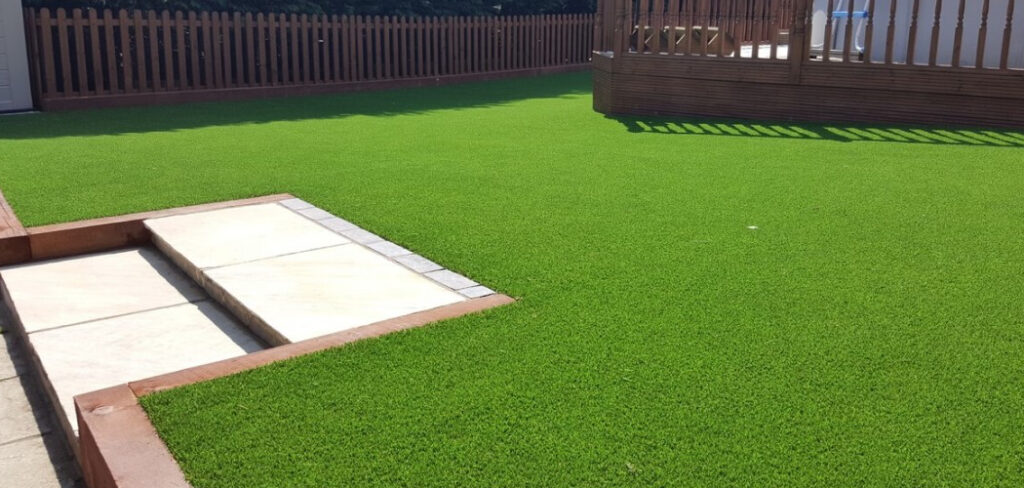
If you are like me, you may have been a bit intimidated by the thought of tackling this project. But don’t worry – if you are prepared with the right materials, you can have your artificial grass installed in no time.
So read on to learn more about how to install artificial grass on concrete!
What Will You Need?
Before you get started, several materials and tools are necessary for the project. Most of these can be purchased at your local hardware store or online.
Materials:
- Artificial Grass: You will need enough artificial grass to cover the area of concrete you are working with. Make sure all pieces are cut to size and fit together seamlessly.
- Weed Barrier: This will help prevent weeds from growing through the artificial grass and create a more durable base.
- Sand and Gravel: Use sand to fill in areas of low soil or cracks, then add gravel to help evenly distribute weight across the entire area.
- Adhesive Glue: This will help keep the artificial grass down on top of the concrete so it does not shift around when used.
Tools:
- Tape Measure: To ensure that your measurements are accurate for cutting your synthetic turf pieces appropriately.
- Utility Knife or Razor Blade: Used for cutting your turf pieces to size
- Trowel or Flat-Edged Shovel: To help spread the sand and gravel across the surface.
- Broom: For sweeping away any loose debris once your project is complete.
Now that you have all your materials and tools, it’s time to start!
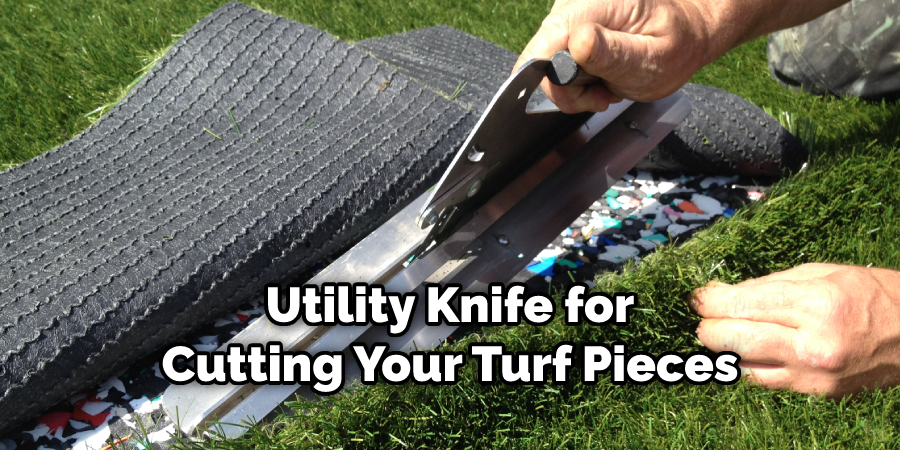
10 Easy Steps on How to Install Artificial Grass on Concrete
Step 1: Measure and Prepare Area
First, use a tape measure to determine the size of your workspace. Make sure to measure both width and length to ensure you have enough artificial grass for the area. Once measurements are taken, proceed with cutting your turf pieces according to size.
Next, spread out a layer of weed barrier on top of the concrete surface before laying down any turf or other material. This will prevent any weed growth from occurring beneath your artificial grass.
Step 2: Add Sand
Once the weed barrier is in place, spread a layer of sand on top to further support your artificial grass. This will help fill in any low spots or cracks and create an even foundation for your turf. Use a trowel or flat-edged shovel to help spread the sand evenly if necessary.
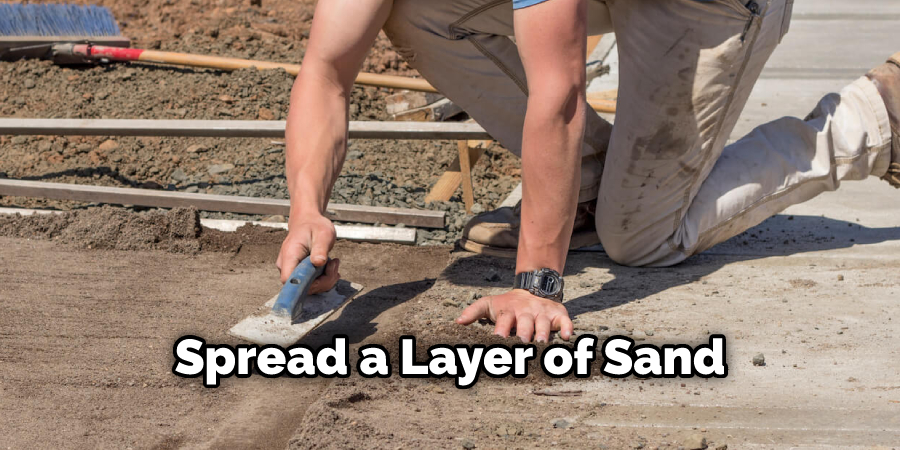
Step 3: Lay Turf
Now it’s time to start laying down your artificial grass! Begin with one corner of the area and work your way across until all pieces are laid down correctly. If needed, use a utility knife or razor blade to cut any excess material away from the edges.
Step 4: Secure Turf with Adhesive Glue
To ensure that the turf does not shift when used, apply adhesive glue around the perimeter of the area. This will help keep it in place and secure it to the concrete surface. Additionally, you may want to glue down any edges that are not secured by the weed barrier.
Step 5: Add Gravel
Once the adhesive glue has dried, add a gravel layer over the turf. This will help to distribute weight evenly across the entire area and create a more durable base for your artificial grass. Use a flat-edged shovel or trowel to help spread the gravel evenly if necessary.
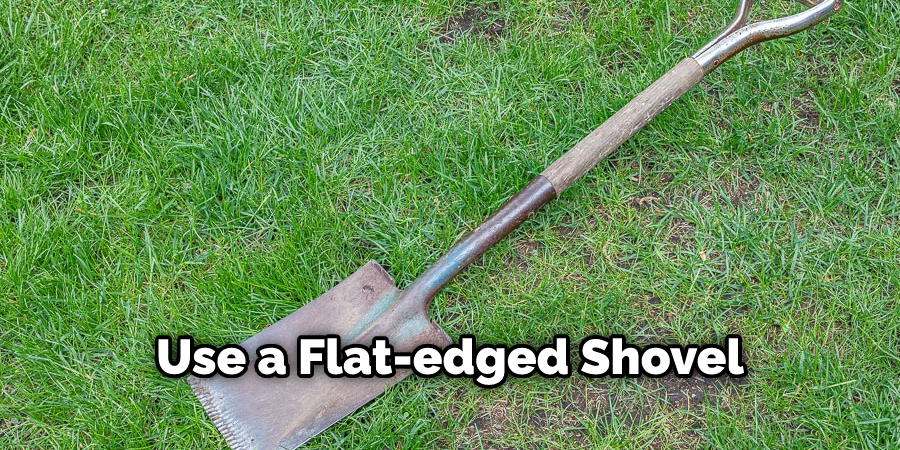
Step 6: Brush Turf
Using a broom or brush, gently sweep away any loose debris from on top of the turf. This will ensure that all pieces are firmly attached to one another and that no excess material is sticking up in areas. Don’t forget to brush against the grain of the turf while doing this.
Step 7: Trim Edges
If needed, use scissors or other sharp tools to trim away any excess material from the edges of the area. This will give it a more professional, polished look. Try not to cut too much away from the edges, as this may affect the overall integrity of your artificial grass installation.
Step 8: Clean and Water
Before using your artificial grass, clean it thoroughly with water and any other cleaning agents if necessary. This will help prevent any buildup of dirt or debris over time. Use a hose or other sprayer to distribute the water across the entire surface evenly.
Step 9: Add Infill
If desired, add infill material such as rubber granules to the turf for extra cushioning and support when walking on it. Be sure to apply a layer evenly across the entire surface for the best results. It is important to use infill material that is specifically designed for artificial grass.
Step 10: Enjoy Your New Artificial Grass!
You’re all done! Now sit back and enjoy your new artificial grass lawn – no mowing or upkeep required! Congratulations on a job well done.
You can now sit back and enjoy your beautiful new outdoor space for years to come. Thank you for taking the time to follow these steps, and we wish you all the best in making this home improvement project a success!
5 Additional Tips and Tricks
- Use a pressure washer to remove any dirt and debris from the concrete.
- Measure out the area that you want your artificial grass installed on, and use chalk to mark it off for easier cutting.
- Add a layer of crushed stone or pea gravel underneath your artificial grass to create an even base and help with drainage.
- Install edging around the perimeter of the artificial grass if you want a more defined look.
- Lastly, use nails or screws to secure your turf in place once it is laid down on the concrete surface. Ensure they are secured well so they can’t come loose when mowing or walking on it!

Following these steps ensures that your artificial grass will last for years to come and look great while doing it. By installing your turf properly, you’ll be rewarded with a beautiful and low-maintenance lawn that you can enjoy for years to come!
5 Things You Should Avoid
- Don’t forget to use a weed killer before laying the turf down.
- Avoid laying the turf directly onto concrete without any support layer like crushed stone or pea gravel.
- Do not overlap your seams, as this can cause bumps and unevenness in your lawn.
- Steer clear of using regular soil for your base, as it is too dense and can cause drainage issues over time.
- Finally, do not use an adhesive to secure the edges of your artificial grass, as this could lead to staining or discoloration of the turf itself.
By following these tips, you will have a beautiful artificial lawn that lasts for years! If you follow all these steps correctly, you should have a great looking lawn that will last for years with minimal maintenance. Enjoy your new artificial grass!
5 Different Theme Ideas to Consider
- Create an oasis with a tropical theme by adding some plants and flowers in blue, green, and yellow hues.
- Go for an elegant look with a white and gray design that has subtle hints of color when the sun reflects off it!
- Give your turf a natural feel by incorporating some flowers, trees, and other natural elements into your artificial turf.
- Add a modern twist with colors of black and gray that make your lawn stand out in the neighborhood!
- If you’re feeling creative, why not go for an abstract design that combines colors and shapes to create something unique?
No matter what design you choose, your artificial grass will be sure to look stunning and add value to your home. Have fun with the designing process, and make sure to keep it looking great by following our tips!
Conclusion
How to install artificial grass on concrete is an excellent and cost-effective way to add value and beauty to your property. You may think that it’s a complicated process, but with the right materials and steps, you can transform your yard into something special.
Following the above steps will give you a beautifully manicured backyard in no time. The result may not be perfect right away, but with ongoing maintenance, some top-dressing fertilizing, and a little love, your yard will look more natural and resilient in no time.
All in all, while installing artificial grass on concrete is not a quick or easy project, it’s definitely worth the effort if you’re looking to dually beautify and protect your outdoor space for years to come.
About
Outdoor Fixes is a distinguished figure in the world of Diy design, with a decade of expertise creating innovative and sustainable Diy solutions.
His professional focus lies in merging traditional craftsmanship with modern manufacturing techniques,
fostering designs that are both practical and environmentally conscious. As the author of diy,
outdoorfixes delves into the art and science of outdoorfixes-making, inspiring artisans and industry professionals alike.
Education RMIT University
(Melbourne, Australia) Associate Degree in Design (Outdoor Fixes) Focus on sustainable design, industry-driven projects,
and practical craftsmanship. Gained hands-on experience with traditional and digital manufacturing tools, such as CAD and CNC software.
Nottingham Trent University
(United Kingdom) Bachelor’s in outdoorfixes.com and Product Design (Honors) Specialized in product design with a focus on blending creativity with production
techniques. Participated in industry projects, working with companies like John Lewis and Vitsoe to gain real-world insights.
Publications and Impact
In diy, Outdoor Fixes his insights on indoor design processes, materials, and strategies for efficient production.
His writing bridges the gap between artisan knowledge and modern industry needs, making it a must-read for both budding designers and seasoned professionals.

